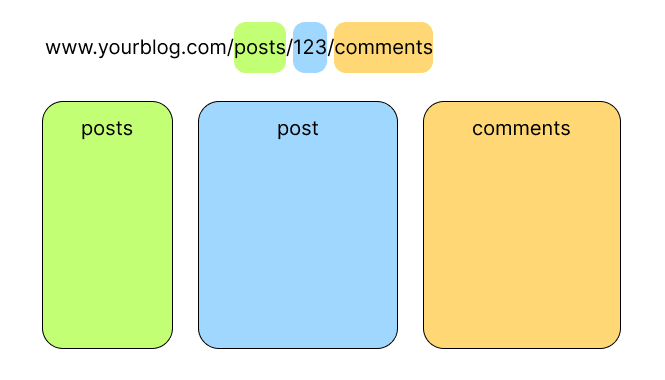Phase-2 Let’s Talk About React Router
What is Client-Side Routing?
- Client Side Routing - handles all the routing logic with JavaScript, without additional GET requests for some new HTML document
- Single-Page Application (SPA) - one HTML document for the entire app
- The server is not responsible for handling the routing, fetching, and displaying. The client side is responsible
- This enables faster user experiences because the browser doesn’t need to request an entirely new document
- Also enables a more dynamic user experience with things like animation
Are There Any Limitations?
- The first page can take a longer time to load if the app is big
- SPA doesn’t have pages, in the traditional sense, which makes it harder for analytical tools to track page views
- Harder to design compared to multi-page applications
What is React Router?
- React Router - a JavaScript framework that lets us handle client and server-side routing
- Reacts’ most popular client-side routing library
Core Features
- Conditional rendering of components based on URL
- When the URL is
/home, the<Home>component is displayed
- When the URL is
- Programmatic navigation using JavaScript
- When the home page link is clicked, the URL changes to
/home, and content is updated without making a new request for a new HTML
- When the home page link is clicked, the URL changes to
- All of the features of React Router build on top of other features that are already built into JavaScript via different web APIs, like location and history
- Location API
window.location;- returns location object with useful info about the current page
- Window API
window.history;- returns how many locations you have visited in this window sessionwindow.history.back();- takes you to last locationwindow.history.forward();- takes you forwardwindow.history.pushState();- programmatically navigate to a new page
- Location API
How To Use React Router
This example is from React Router Docs.
- First, install
create-react-appto make a new project
1
2
npm create-react-app my-app
cd my-app
- Next, install React Router
- In this example, we are using
react-router-domsince we are building a web app
- In this example, we are using
1
npm add react-router-dom
- 3 pages are handled by the router
- Home
- About
- Users
- As you click on the
<Link>s, the router renders the matching<Route>
3 Primary Components
- Routers (Currently Does Not Support Data APIs)
<BrowserRouter>- Uses regular URL paths
- Your web server needs to serve the same page at all URLs that are managed client-side by React Router
<HashRouter>- Stores the current location in the hash portion of the URL
- Differences - the way they store the URL and communicate with your web server
- Router Matchers
<Switch>No longer used in v6- When
<Switch>is rendered, it searches through its children (<Route>) elements to find and match its path with the current URL
- When
<Routes>- Replaced
<Switch>
- Replaced
<Route>- This element’s props are read to create a route by
<Routes>
- This element’s props are read to create a route by
- More on routes below
- Navigation / Route Changers
<Link>- Creates links in your application
<NavLink>- A superset of
<Link>, adding styling attributes to a rendered element when it matches the current URL
- A superset of
<Redirect>- Forces navigation
Picking a Router - Supports the new data APIs
createBrowserRouter- It uses the DOM History API to update the URL and manage the history stack
createHashRouter- Instead of using normal URLs, it will use the hash portion of the URL to manage the “application URL”
- History Stack - As the user navigates, the browser keeps track of each location in a stack
Nested Routes
- Nested Routes
- Allows multiple components to render on the same page
- Defines routes in a hierarchical manner - a single URL can match multiples routes in a nested branch of the tree
- A parent route can have child routes
- Each child route represents a portion of the URL
- A parent route can have child routes
Nested Routes Visual-Click Me!
Routes, Route, Switch
<Routes>- Whenever the location changes it looks through all its child routes to find the best match and renders that branch of the UI
- Outermost component
- Wraps multiple
<Route>components
<Route>- The
<Route>component takes in apathandelementprop - The
pathvalue holds the route path - The
elementvalue holds a pointer to a component or a page
- The
<Switch>- Has nested Route components that need exact paths
- Renders the first child
<Route>that matches the location
What Are Hooks?
- Hooks - Allow access to state of the router and perform navigation from inside of the components
- Most errors are handled automatically by React Router








